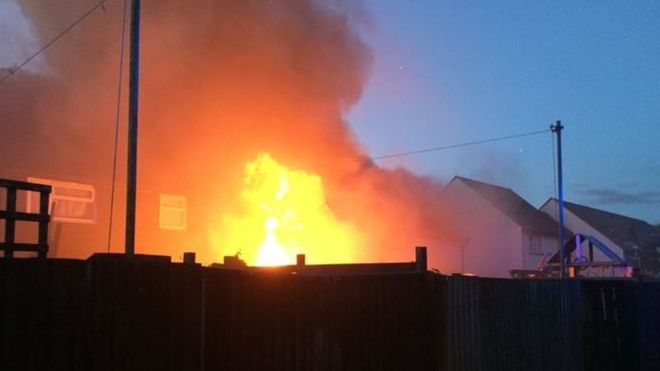Fire detecion and smoke detection
I want to create 2 binary classifier model
1) Fire detection
2) Smoke detection
Can you please suggest which will be better to train LBP cascade(It require annotated data) or SVM/Logistic regression/ or any other deep learning binary classifier(Inception-v3, Dense-net)?
I have a positive and negative dataset of both fire and smoke dataset.
My concern here is speed(accuracy around 80% is acceptable)!
One of the test image is as bellow.



Well the task you want to solve is classification. Forget about Regression. Classification is : "Thats a fire, Thats smoke" Regression is "There will be fire in the next n hours"
Binary Classification is "That fire or nor" , "That smoke or not". To train a classifier you need labeled data.
throwing "buzzwords" around won't help.
I hope we both are on same page, logistic regression is also a binary classifier.And yes i can go with binary classification, just wanted to know which direction is worth investing time whether LBP cascade or any other binary classifier.
does it have a reproducable (grayscale) texture ? does it have a "shape" ? or "edges" ? do you know, how LBP features work ?
besides classifiers, you'll have to think about features to classify
I do not have any idea about working of LBP. Can you please suggest will in work on fire images? Yes i will think about using features.
why don't you just hoogle it ?
Sure will hoogle it :p. Thanks for your response.
Old answer, but related: Smoke detection.
There are some video results.
Some general thoughts: A fire varies from small and no smoke (gas stove) to big and a lot of smoke(bushfire). There are also fires with no flames but a lof of smoke(smoldering fire).
From my point of view the features (berak adviced us to think about them) of a fire are flames and smoke. They usually occur togther, but having one of them is already an indicator and worth an alert. I would train a model which would contain all these combinations of flames and smoke and label to a class "fire". I personally would let the model decide when a fire is present or not.
Your approach is to make classifiers for the features and make the decision on your own(fire or not - you are the classifier more or less). Thats could work but maybe you are missing features(less accuracy) with approach.
One fire feature i forgot - its always there unless you have a cold flame. HEAT! It usually lets the air behave like mirror. Maybe there are even more fire features which you would miss when concentrating on smoke and flames only.
I did a lot of fires when i was young(grown up on non city area)
Thanks for the insight holger.Combining smoke and fire is also an interesting way to look into the problem.